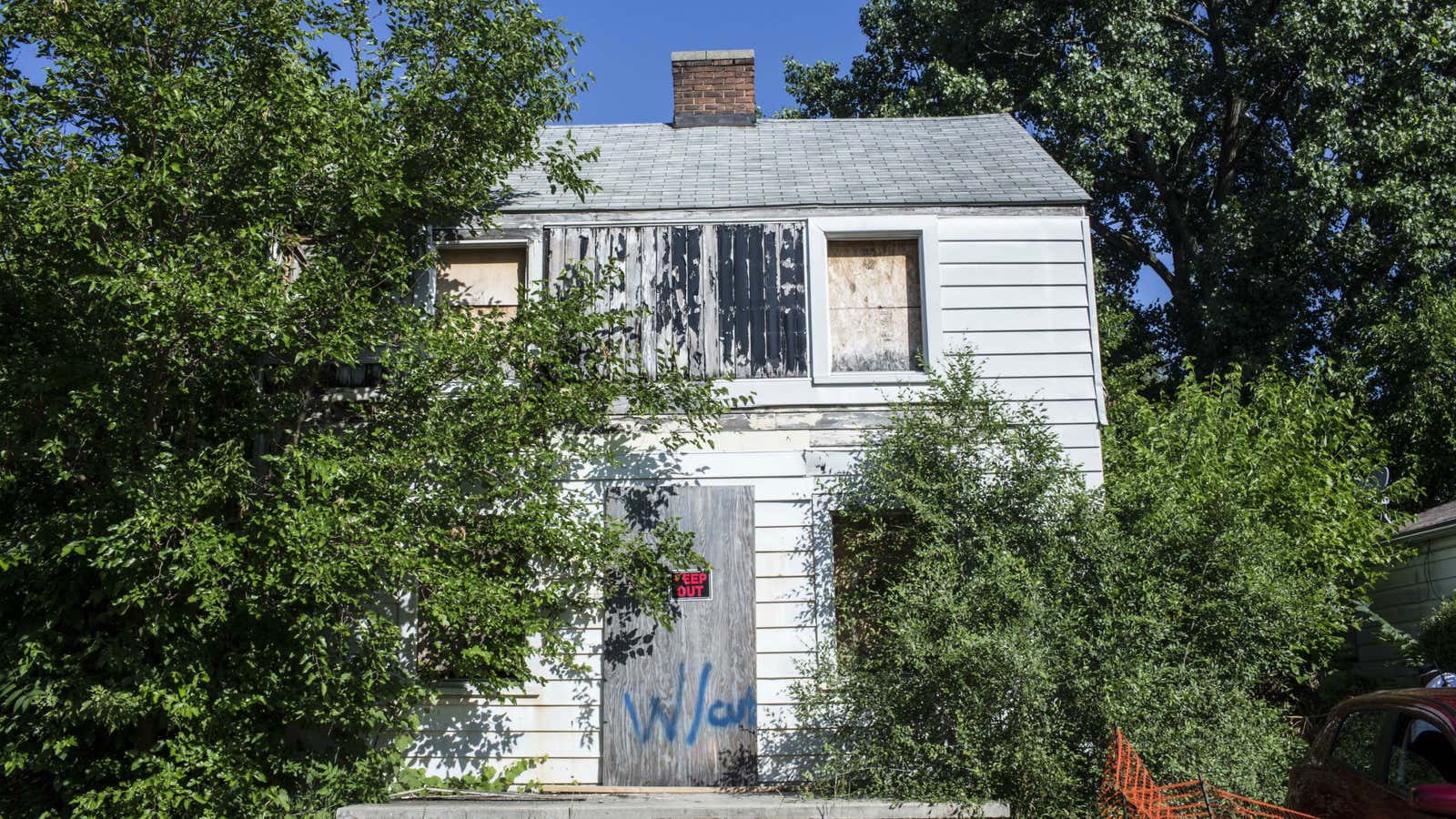American civil-rights icon Rosa Parks moved from Alabama to Detroit in 1957. Her first home in the city, on South Deacon Street, was demolished last week.
Well, not all of it. American artist Ryan Mendoza stepped in to preserve the façade of the house, shipping it to Germany in two 40-foot containers, at his own expense, in order to turn it into a piece of art.
Mendoza, a 44-year-old from New York who now splits his time between Berlin and Naples, will spend the next few months reconstructing what’s left of the two-story house in his studio in the German capital, with a view to taking it on a tour of European museums.
Mendoza said he isn’t necessarily “the right person for the job,” but when Parks’s niece, Rhea McCauley, approached him for help, he felt he had to step up and save the house from total demolition. “It should be somebody in the black community doing this, not a white guy,” Mendoza said. “I’m not even from Detroit.”
Parks, a seamstress, became an icon in the civil rights movement when she refused to give up her seat to a white man on a bus in Montgomery, Alabama in 1955, and was convicted of violating segregation laws. Her act of resistance led to a bus boycott, led by Martin Luther King Jr. The US Supreme Court eventually ruled that bus segregation went against the constitution.
Parks moved from Alabama to Detroit in 1957 where, according to her niece, she continued to suffer racist threats and abuse. The South Deacon Street house, which she lived in for a few years after arriving in the city, was handed over to Mendoza at a special private ceremony on Sept. 25, the day before it was torn down. (Parks lived in an apartment downtown at the time of her death, in 2005.)
“She loved the city, but I don’t think the city loved her very much back,” McCauley said at the send-off, according to the Detroit Free Press. “This house should have been preserved here. But we live in a world where every other project takes precedence.”
McCauley, who bought the house from the city for $500, was unable to raise enough money to preserve it, but knew of Mendoza from his art projects in Detroit. He is best known for “The White House,” a run-down house from the poor 8 Mile Road area, which he moved to the Verbeke Foundation in Belgium. He also turned two empty Detroit houses into art installations featuring fake bullet holes through which the names of Donald Trump and Hillary Clinton shine at night.
“What I would like to do is hold the house hostage,” Mendoza told people at the house’s farewell ceremony in Detroit, before taking it away to Berlin. “America, you lost this house… you gotta get it back. And it’s going to cost you. And I want that money to go to the Rosa Parks foundation.”
